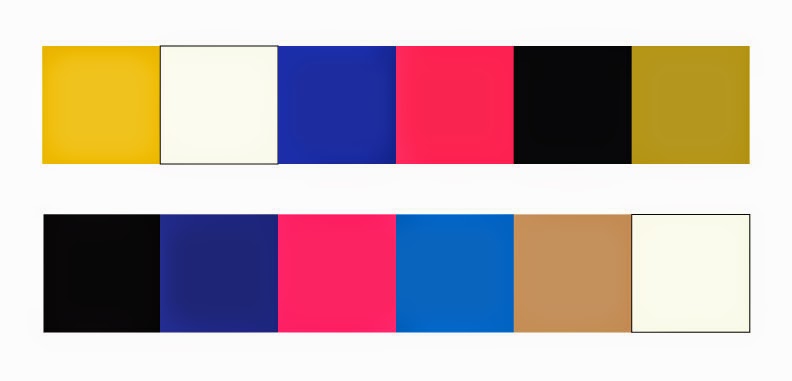For our ongoing project, designing a gig poster, I checked out this website which showed some contemporary poster designs, almost all from bands. I found most of these posters surprisingly similar, most of them were supposed to look like they had been silkscreened, and used collage of old photographs or cartoonish illustration. I don't object to these strategies, as shown below, my favorite poster of the bunch used these techniques. But when so many of the posters are similar, it places a specific bar very high. The silkscreen process has to look really good and the images have to be legible and interesting, rather than simply having a cartoony vintage look. These are not simple requirements, and a lot of the posters did not do more than collect all these elements. Below is a concert poster for the marching band Mucca Pazza:

The poster is a three color silkscreen which depicts a small cartoon man beating an over-large drum which is printed with the name of the band. This itself is a clear idea, Mucca Pazza is an exuberant, high energy marching band and the huge drum has the potential to neatly present the concept and the band's spirit. But there is a lack of clarity in the presentation. It is hard to tell that it is a drum which the cartoon character is beating, it looks more like the cartoon is simply stuck on the bottom of a huge circle. The silkscreen effect also does not reach its potential, the splattering of ink could be used to provide an outward energy from the center of the drum but instead is merely a decorative effect unrelated to the other elements. Finally, the color scheme, presumably chosen to add to the vintage feel, is more reminiscent of a swamp than a celebration.
Not all posters lead me to such harsh criticism, I think that the Mucca Pazza poster was one of the most derivative and least considered. There are many other posters that use the same elements to greater effect. However, my favorite poster of the bunch separates itself from the pack by its apparent lack of elements.
The poster for Phish's show at the Utica Memorial Auditorium in Utica, New York is far more quiet and considered in its presentation. The silkscreen effect is more than decorative, it renders a photograph into a more legible composition. The graffiti-like writing of the band and the details of the show on the side of the building are not as easy to read as they could be, but they serve a purpose. First, it makes the viewer question whether the information was really printed on the side of the building, that draws the viewer in. Second, it argues that this concert is part of a new chapter in Utica, industry is over, as evident by the decaying building, but culture is taking over.

Among so many compositionally complex, bright and loud designs, a picture of a run-down industrial structure behind an empty lot is a peculiar choice. The quietness of the image, and it's apparent simplicity sets it apart from the other designs, it stands out because it lacks the attention-grabbing energy of so many other designs. In that way it makes a statement: there is such a glut of promotional images, especially online, and so many of them are so voracious in their desire to impress, that they tend to run together into undifferentiated noise. The Phish poster doesn't need that noise, it asserts itself through lack of promotion. Another way to say this is: by not attempting to heavily promote itself, Phish shows that they have an audience no matter what. The "X was here" attitude of graffiti lends itself to the position of this poster, reminding people that there will be a show is enough for them to come.






















